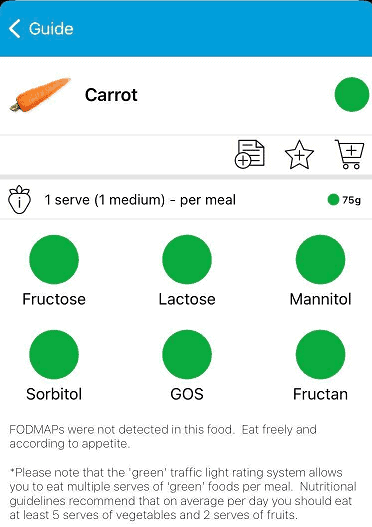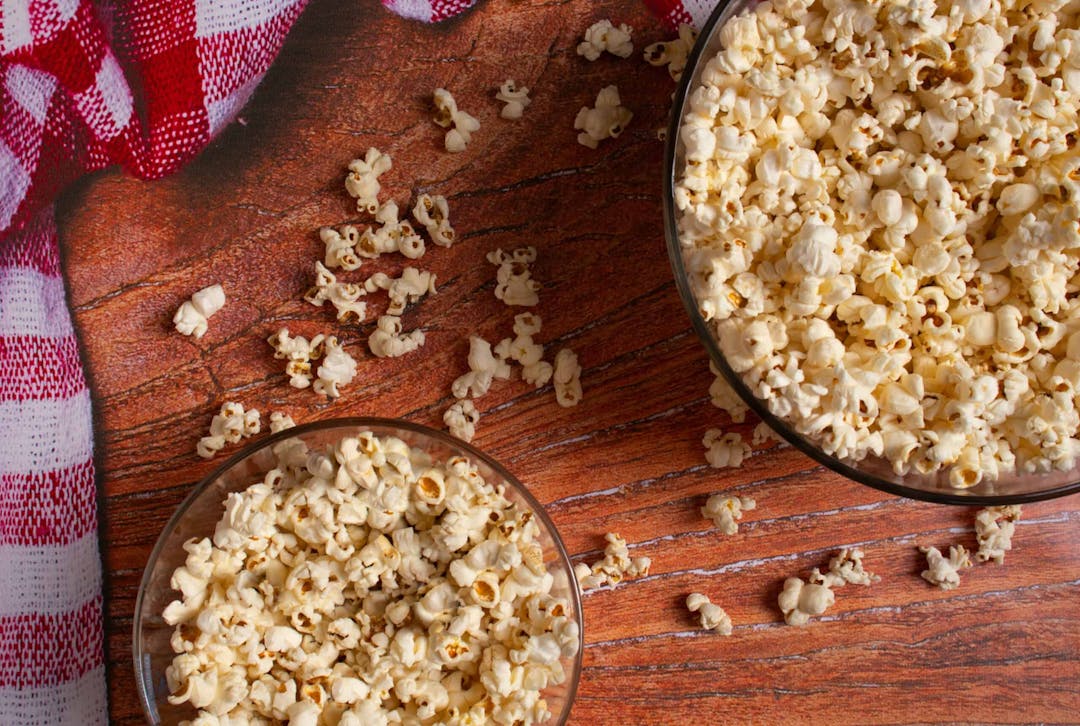


Find foods you can eat.
What is FODMAP Stacking and How Do You Avoid It?
Published on April 13, 2021Maybe you’ve heard of this thing called “FODMAP stacking” and you’re wondering what it’s all about. If so, this article is for you. Or maybe you’ve been on a low FODMAP diet for multiple weeks and you’re still having flare ups, despite following the appropriate portion guidelines (as discussed in our previous post). It’s possible FODMAP stacking could be the culprit.
What is FODMAP Stacking?
Stacking happens when you eat two or more servings from the same FODMAP group at the same time or within several hours of each other. When this happens, FODMAPs can compound together and cause symptoms. For example, both sweet corn and green bell peppers become high in sorbitol at certain serving sizes. For some individuals, consuming low FODMAP servings of these two vegetables together could cause symptoms.
It should be emphasized that FODMAP stacking is unlikely to be an issue for most people. As we know, though, everyone with IBS has a unique set of sensitivities, and what causes symptoms for one person may not cause symptoms for another.
As we’ve talked about in previous posts, the Monash FODMAP App should be used to determine appropriate serving sizes for low FODMAP foods. Researchers at Monash University, the inventors of the Low FODMAP diet, routinely test foods to determine their FODMAP content. They publish their results in their app, which uses a traffic light system to identify high and low FODMAP foods and appropriate portion sizes. During the elimination phase, Monash recommends that you consume mostly “green” (low FODMAP), limit “amber” (moderate FODMAP), and avoid “red” (high FODMAP) serving sizes.
Per Monash, most people on a low FODMAP diet should be able to tolerate multiple servings of “green” foods at one time. They have also said that most of the time, IBS symptoms are caused from eating high FODMAP foods. While that’s good news, it’s important to be aware of FODMAP stacking for those who may still be reacting to low FODMAP foods.
Why Should You Avoid FODMAP Stacking?
Stacking may cause you to experience those unpleasant IBS side effects. Stacking can also be a problem when challenging FODMAPs during the reintroduction phase, which is why it is always suggested you allow a rest or “washout” period of at least three days before moving onto the next challenge.
How to Prevent Stacking
Here are a few tips to reduce the odds of FODMAP stacking:
- Eat a variety of foods from different FODMAP categories. As a refresher, the FODMAP categories are Oligosaccharides (Fructans and GOS), Disaccharides (Lactose), Monosaccharides (Fructose), and Polyols (Sorbitol and Mannitol). Feel free to mix and match “green” servings from various categories. Nutritional variety is important for keeping your gut and overall body healthy. The more variety you have in your diet, the more nutrients you will get. Rotate foods and avoid eating the same meals day after day.
- If choosing foods from the same FODMAP category at one sitting, limit to 1 full serving of one and ½ serving of the other.
- Spread out meals and snacks 3-4 hours apart.
- If you need to eat between meals to meet your nutritional needs or satisfy your appetite, try to fill out meals and snacks with FODMAP free foods (see below).
- Limit fruit to 1 serving per sitting during the elimination phase.
What are FODMAP Free Foods?
In the Monash FODMAP App, for those foods rated “green”, check for the footnote: “FODMAPs were not detected in this food” or “only trace amounts of FODMAPs were detected in this food.” If they are free from FODMAPs, that means that they can be eaten freely in any portion size and are not a worry for FODMAP stacking. As you can see below with carrots, these foods will only have a “green” rating next to them with no “amber” or “red” portion sizes. Some examples of these FODMAP free foods include rice, arugula, and butter lettuce.

Protein foods like eggs, poultry, meats, and seafood are also free from FODMAPs. Be sure to get adequate portions of protein at your meals, which will help fill you up, too.
Examples of FODMAP Stacking and How to Avoid It
Example 1: Here is an example of how you can easily stack low FODMAP foods by accident. Say you make a stir fry with maximum low FODMAP amounts of bok choy (1 cup / 75 grams), green beans (15 beans / 75 grams), and green pepper (½ cup / 52 grams). If you look at the Monash FODMAP app, it will show you that each of these foods is from the sorbitol category. So even though you’re eating them in low FODMAP portion sizes, they may “stack” up and cause you symptoms.
How to Avoid: A better strategy in this example of vegetable stir fry dish would be to limit your intake from the same FODMAP group to one serving of one vegetable and a half serving of the other. So you can use one portion from the sorbitol group (15 beans / 75 grams green beans), another ½ from the sorbitol group (bok choy ½ cup / 37 grams), and then add some FODMAP free foods; like red pepper, carrots, and English spinach. Voila, you have yourself a stacking-free, low FODMAP stir fry.
Example 2: If you’re a big smoothie fan and you load up on chia seeds, almond butter, raspberries, blueberries, and bananas at the same time, this can also be a common stacking issue, as they are all from the fructan group!
How to Avoid: When it comes to smoothies, limit your serving to one portion of one type of fruit, or one half serving of two different types of fruits. You can see by checking the Monash app that a low FODMAP serving of banana is one medium unripe banana (100 grams) and a low FODMAP serving of raspberries is 30 berries (or 60 grams). So in this example, you can use ½ unripe banana (or 50 grams) plus 15 berries (or 30 grams) to keep FODMAP stacking to a minimum.
Summary
Again, let me emphasize that FODMAP stacking involves a level of detail that may not be necessary if you’re happy with how your symptoms are currently controlled. However, if you continue to have flare ups on a low FODMAP diet despite following portion guidelines, try minimizing FODMAP stacking. As a reminder, it’s always best to undertake the low FODMAP diet with a trained registered dietitian to help you control your symptoms and get the most variety into your diet!
Please feel free to ask if you have any questions in the comments below!
Let Fig guide you on your FODMAP journey
Scan groceries to see if they’re Low FODMAP with Fig’s phone app. Also, search 100+ grocery stores to build your Low FODMAP shopping list.
 How to Make a Low FODMAP Pizza
How to Make a Low FODMAP Pizza Low FODMAP Snacks
Low FODMAP Snacks